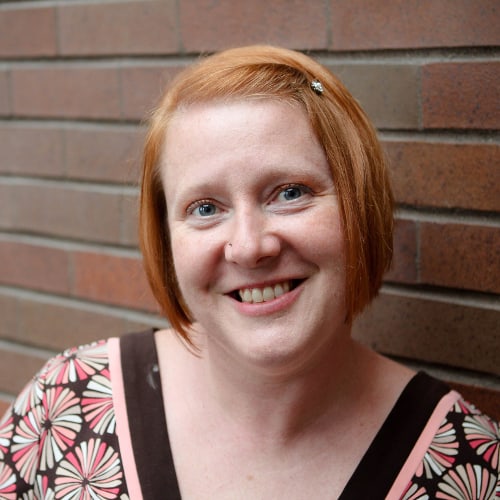Smart Review | Heart! Fully Forming Your Professional Life as a Teacher and Leader

By Amber Chandler
Like many otherwise rational people, I look for signs. Everywhere. If an email doesn’t send, I will shelve it for a week, worried that the content will somehow impact my life negatively. When I’m in slow traffic, I assume that the universe is conspiring to keep me from a potential accident.
I have a hunch that I’m not the only one, so when I read the introduction to Heart! Fully Forming Your Professional Life as a Teacher and Leader by Timothy Kanold, I loved that he used the metaphor of his own unexpected heart attack to explain the impetus of writing a book about having heart.
The premise of this book is that “The heart of our classrooms, our school and our district seems to be the way we should measure our professional journey. Otherwise, why would we choose such a relationally intense profession, a profession that calls for understanding the role our heart plays?”
As a teacher who considers relationships the center of what I do, it was intriguing to find that this book was written with the importance of keeping your “heartprint” in mind. A heartprint, as defined by Kanold, is “the distinctive impression and marked impact your heart leaves on others–your students and your colleagues, as your career and school seasons unfold.”
The book itself is a unique journey, written not-exactly-chronologically, but also recursively in style, and it includes a structure of interactive sidebars asking the reader to reflect on aspects of their personal and professional lives.
 It is also organized into parts, based on the letters in HEART:
It is also organized into parts, based on the letters in HEART:
H is for Happiness
E is for Engagement
A is for Alliances
R is for Risk
T is for Thought
If this sounds confusing, be assured it is not. Much like good teaching, good structure can feel seamless, despite the hours and energy behind making it work. Kanold clearly thought deeply about the topic, and the organization reflects his desire to address these topics in a variety of ways.
I admire the book’s expansiveness and the multitude of resources that Kanold includes, as well as his wide experiences as an award winning educator, administrator, author and consultant. This book is able to take multiple perspectives because Kanold has the experience to back it up.
I’m a big fan of books like this because guided reflection is so helpful for busy people–and particularly educators. We’re always living by a calendar, and always with an eye on tomorrow, so it isn’t often enough that we can reflect. Personally, as a teacher for almost two decades, it was nice to reflect a little on why I chose education in the first place–reminding me there was once a little girl in a Strawberry Shortcake bedroom teaching stuffed animals and believing 100% in changing the world.
Kanold encourages educators often in the book to tap into that energy and determination, to remember where we came from, how we ended up where we are, what lessons we can take to heart, and which can we share with our students to help their journey.
My favorite chapter is 30, “Your Voice of Wisdom.” This resonated with me as a writer because he nails exactly how to pinpoint your passions so well. He challenges the reader with this: “The secret to knowing your voice is to take a close look at why you respond the way you do. Why do you passionately defend certain principles and behaviors?” I loved this because I arrived at my decision to write my second book (on Social and Emotional Learning) when I just couldn’t let these needs of children go unnoticed. I’d found myself fighting for a cause that I had never articulated, but given Kanold’s wisdom, it makes perfect sense.
What separates this from other books for educators? First, it could easily be found in the “self-help” aisle of the bookstore, given its prescriptive style coupled with the guided questions. However, if, like me, you’ve ever dug into Tony Robbins, Napoleon Hill or other “self-help” gurus, you may have found yourself questioning the application to your own life.
The best part of this book is that all of the wisdom is tailored towards the challenges of education; the emotional, physical and psychological aspects are addressed throughout in a really organic way. He casually mentions some of the great minds of today including Brene Brown and Carol Dweck alongside President Lincoln and Pythagoras, which leaves the reader with a sweeping sense of continuity on the topic of having heart.
You know that awkward moment when you are leaving the classroom of someone you admire and know that you aren’t going to spend prescribed time together anymore, or maybe at all, and you don’t really want to go yet? As I finished the book of 33 short, digestible chapters, as well as a “Final Thoughts” and an “Epilogue,” it seemed almost as if Kanold couldn’t quite leave the topic behind and “find his way” out of the book, and it’s really endearing.
It made me feel like I was finishing a class more than concluding a book. However, just as when I left a favorite professor behind, I always knew that what they taught me remained.
For more book reviews, see:
- Smart Review | The New Art and Science of Teaching
- Smart Review | The Teacher Liberation Handbook
- Smart Review | Learning to Learn Better
A copy of this book was provided for this review. If you are interested in having GettingSmart.com review your product or book, please contact [email protected].
Stay in-the-know with all things EdTech and innovations in learning by signing up to receive the weekly Smart Update.





karen josephs
I was intrigued by the " Heart" in the title as our school values programme uses this acronym HEARTWISE. Initially it started out as just HEART then WISE was added a year or 2 later. Having Heart and being Heartwise are common phrases heard within our classrooms and in our environment.
For us H is Honesty, E:excellence, A:aroha, R:respect, T:tolerance, W:whanua, I:inquiry, S:sustainability, E:effort. As you can see a collection of social, relationship principles along with learning dispositions.
Kelly Rockhill
Hello, Amber! I enjoyed the review. Thank you for sharing your insights! I work for Tim's publisher, Solution Tree, and wanted to make sure you were aware that you can access 14 more chapters of HEART! if you choose. Visit go.SolutionTree.com/Heart.